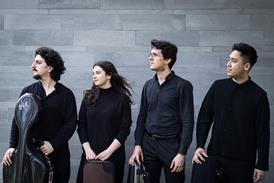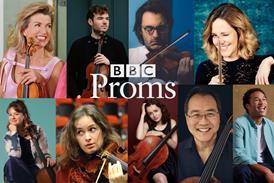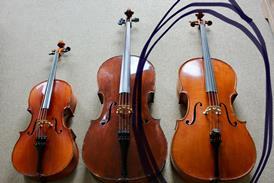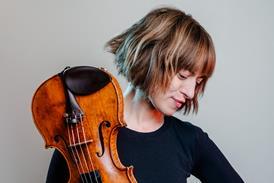Ariane Todes reports on the violinist's return to the concert platform
The returns queue at the Wigmore Hall was out the door tonight for the return of the decade so far. After four years off the concert circuit, Maxim Vengerov was back in the house. And it was good to see him again.
In the April issue of The Strad he told us why he needed a break from his solo career: ‘Looking back, I was totally exhausted and worn out. Not because I was tired, but because there was not enough passion left in me. It’s no wonder: since the age of five I had been travelling.’ There was also the injury – to anyone who has watched Vengerov’s high-tensile playing over the years, with his high violin and shoulders, clenched jaw, and head often thrust back, that certainly came as no surprise.
So we can be grateful that he’s overcome such psychic and psychical ailments and that he felt in fighting spirit to open with the Bach D minor Sonata complete with Chaconne, a piece that signals the triumph of the human spirit if ever there was one. This was certainly a different Vengerov – where I’ve sometimes found his playing verging on coarse, here his tone was sumptuous and deep, with a vast tonal palette ranging from the smallest whispering flute sound to a great big double bass character.
Physically, though, he seemed awkward. His violin hold seemed more relaxed and healthy, with head straight up and arms lower. He’s even developed a bit of a tic, stretching his neck just as he started the first couple of movements of Bach, as if he has consciously to remind himself to stay relaxed. But how easy can it be to change habits, even bad ones, after a lifetime of practice? Just occasionally the old face pulling and postures would flash themselves, only to be dismissed in this battle for his body between good and bad.
With such focus on the sheer physical side of beautiful tone production, interpretation often felt a little cautious and uninvolved. While beautiful, the Bach didn’t really lift, and the Chaconne didn’t build into the transformative piece it can be. (Although to be fair, I don’t think anyone will ever dislodge my definitive performance by Gil Shaham in the same venue a few years ago.) From what I could see sitting towards the back, Vengerov seemed to be using a Baroque bow for the Bach and the Handel sonata he played in the first half. It took me a while to realise this, though, as he sustained his sound throughout the bow length, rather than playing with the lightness of phrasing and breathing space that Baroque bows usually offer, so it seemed a rather odd choice.
By the Beethoven ‘Kreutzer’ Sonata in the second half he certainly seemed more comfortable, even if it was rather a level performance, and he dashed off a couple of encores with his inimitable style (although the struggle with his former mannerisms intensified). Strangely the audience gave no ovation but made an enthusiastic baying sound – perhaps emphasising that while everyone was delighted and very relieved to have Vengerov back, he hadn’t quite touched the buttons that force one to spring up instinctively. But he’s back and he’s healthy, and let’s hope he stays that way.


























No comments yet